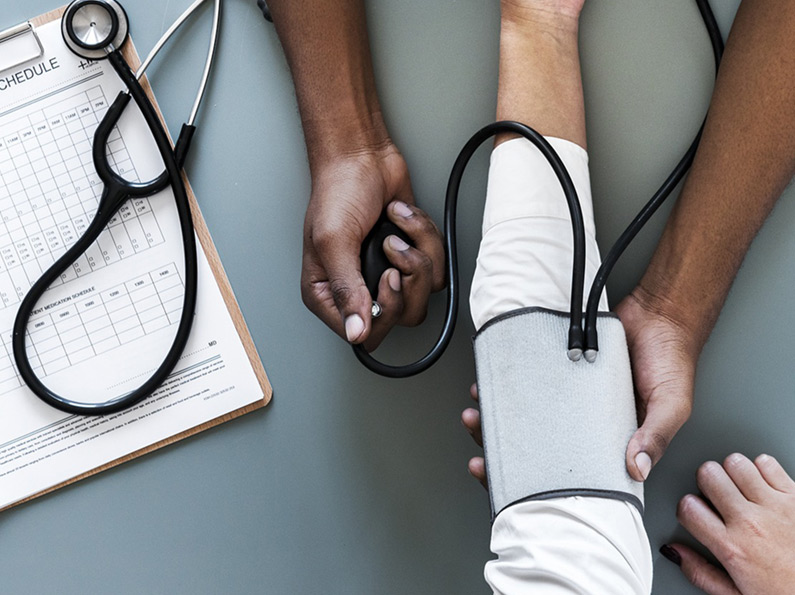High blood pressure (or hypertension) is often called the “Silent Killer.” About one in every three Americans were reported to have high blood pressure in 2016. That’s about to drastically change. The American College of Cardiology and the American Heart Association just lowered the guidelines for what is now considered high blood pressure (hypertension) in November 2017.
The new guidelines – the first comprehensive set since 2003 – lower the definition of high blood pressure to account for complications that can occur at lower numbers and to allow for earlier intervention. The new definition will result in nearly half of the U.S. adult population (46 percent) having high blood pressure, with the greatest impact expected among younger people. Additionally, the prevalence of high blood pressure is expected to triple among men under age 45, and double among women under 45, the guideline authors note. However, only a small increase is expected in the number of adults requiring antihypertensive medication. (1)
Blood pressure categories in the new guideline are:
- Normal: Less than 120/80 mm Hg;
- Elevated: Systolic between 120-129 and diastolic less than 80;
- Stage 1: Systolic between 130-139 or diastolic between 80-89;
- Stage 2: Systolic at least 140 or diastolic at least 90 mm Hg;
- Hypertensive crisis: Systolic over 180 and/or diastolic over 120, with patients needing prompt changes in medication if there are no other indications of problems, or immediate hospitalization if there are signs of organ damage. (2)
The guidelines eliminate the category of prehypertension, categorizing patients as having either Elevated (120-129 and less than 80) or Stage I hypertension (130-139 or 80-89). While previous guidelines classified 140/90 mm Hg as Stage 1 hypertension, this level is classified as Stage 2 hypertension under the new guidelines. In addition, the guidelines stress the importance of using proper technique to measure blood pressure; recommend use of home blood pressure monitoring using validated devices; and highlight the value of appropriate training of health care providers to reveal “white-coat hypertension.” Other changes include:
- Only prescribing medication for Stage I hypertension if a patient has already had a cardiovascular event such as a heart attack or stroke, or is at high risk of heart attack or stroke based on age, the presence of diabetes mellitus, chronic kidney disease or calculation of atherosclerotic risk (using the same risk calculator used in evaluating high cholesterol).
- Recognizing that many people will need two or more types of medications to control their blood pressure, and that people may take their pills more consistently if multiple medications are combined into a single pill.
- Identifying socioeconomic status and psychosocial stress as risk factors for high blood pressure that should be considered in a patient’s plan of care. (3)
What is high blood pressure?
HBP/Hypertension is when your blood pressure, the force of your blood pushing against the wall of your blood vessels, is consistently high.
Why is HBP bad?
It can quietly damage (thus the “silent killer”) your body for years before symptoms develop. Left uncontrolled you may wind up with a disability, a poor quality of life or even a fatal heart attack. Roughly half the people with untreated hypertension die of heart disease related to poor blood flow (ischemic heart disease) and another third die of stroke. (4)
How can I fight back against HBP?
While there is no cure, using medication as prescribed and making positive lifestyle changes can help enhance your quality of life and reduce your risk of heart disease, stroke and kidney disease and more. (5)
Make changes that matter:
- Eat a well-balanced, low salt diet
- Limit alcohol
- Enjoy regular physical activity
- Manage stress
- Maintain a healthy weight
- Quit smoking
- Take your medications properly
- Work together with you doctor (5)
Know your numbers: Your blood pressure is recorded as two numbers. Systolic blood pressure (the upper number) indicates how much pressure your blood is exerting against your artery walls when the heart beats. Diastolic blood pressure (the lower number) indicates how much pressure your blood is exerting against your artery walls while the heart is resting between beats. Have your blood pressure checked often! If high blood pressure is diagnosed, regular monitoring can help confirm if you have high blood pressure, detect patterns and alert you to any changes. It will also show you if the changes you’ve made are working. (6)
Of course, you can always have your blood pressure checked at your doctor’s office but you can also stop in at our pharmacies. Our pharmacists have the monitoring equipment and are trained to check and give you an accurate reading anytime during normal store hours. The pharmacists are also happy to answer any questions you may have about HBP medications.
Originally published in the Creswell Chronicle.
Sources:
